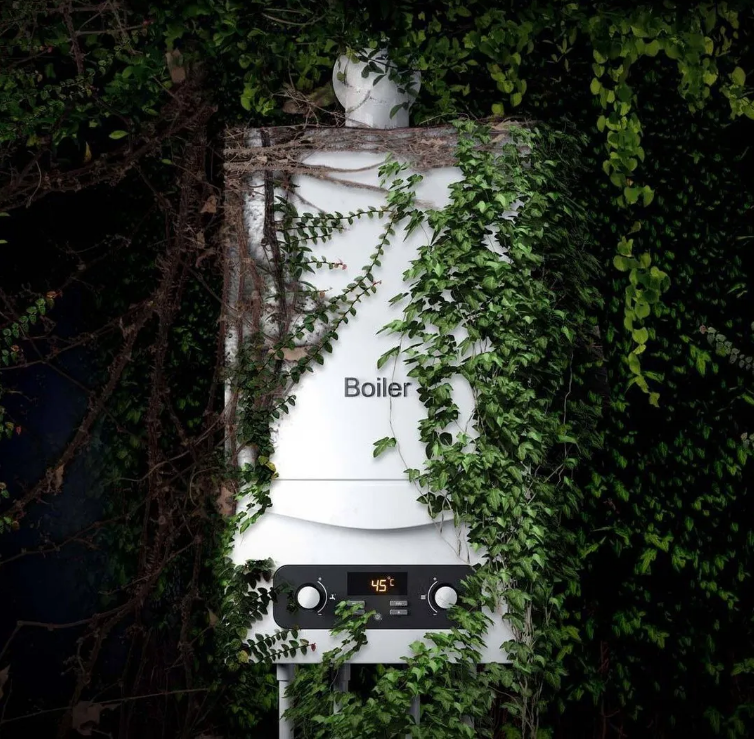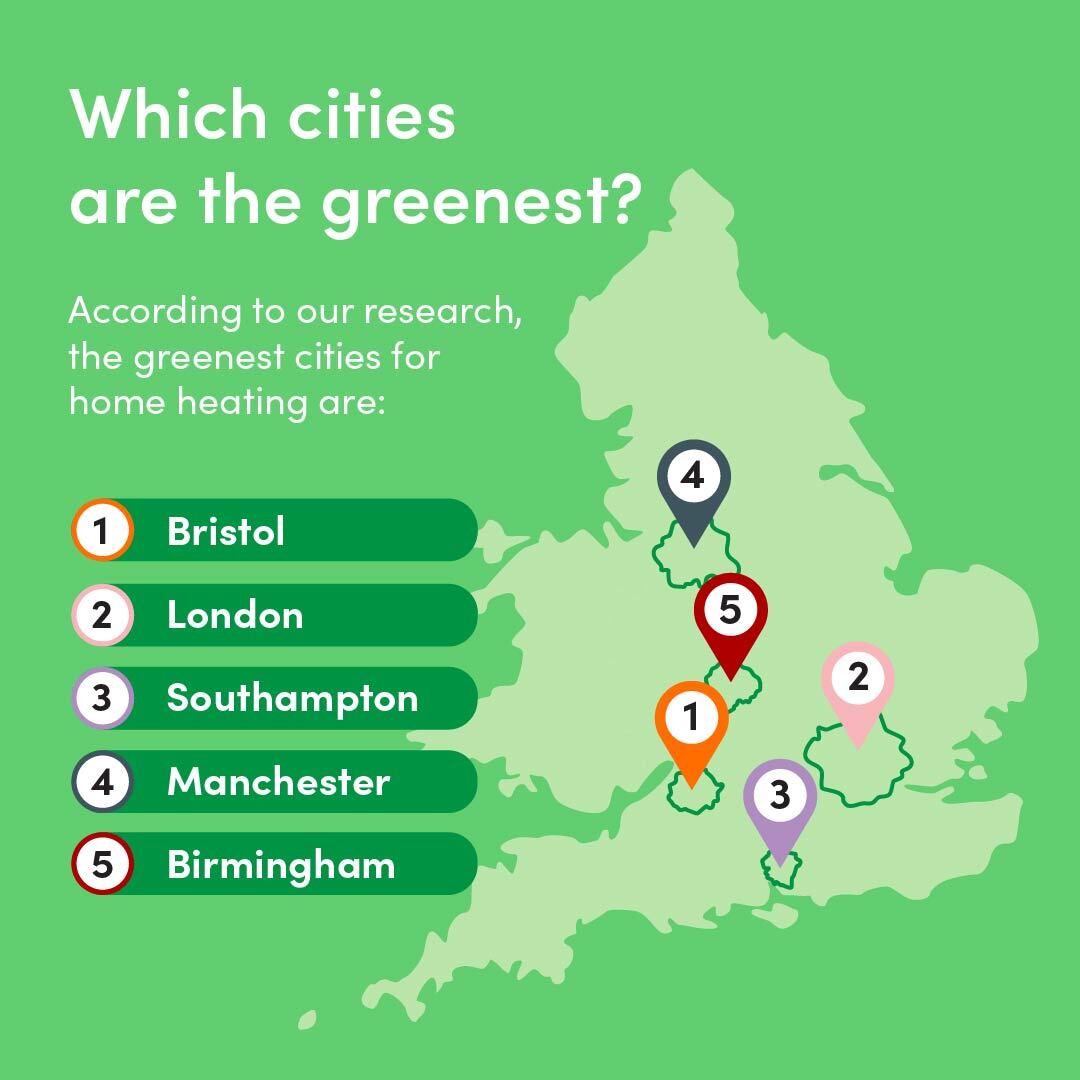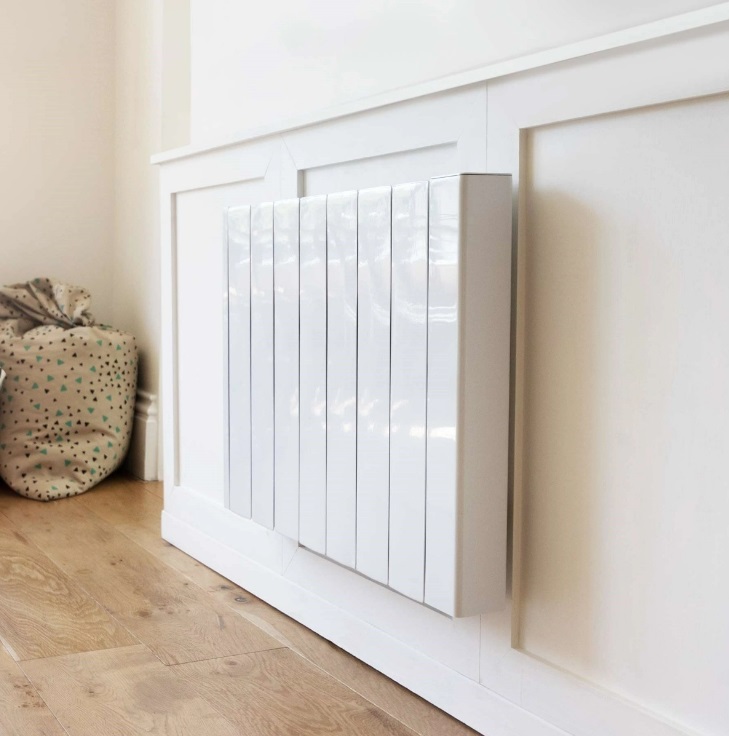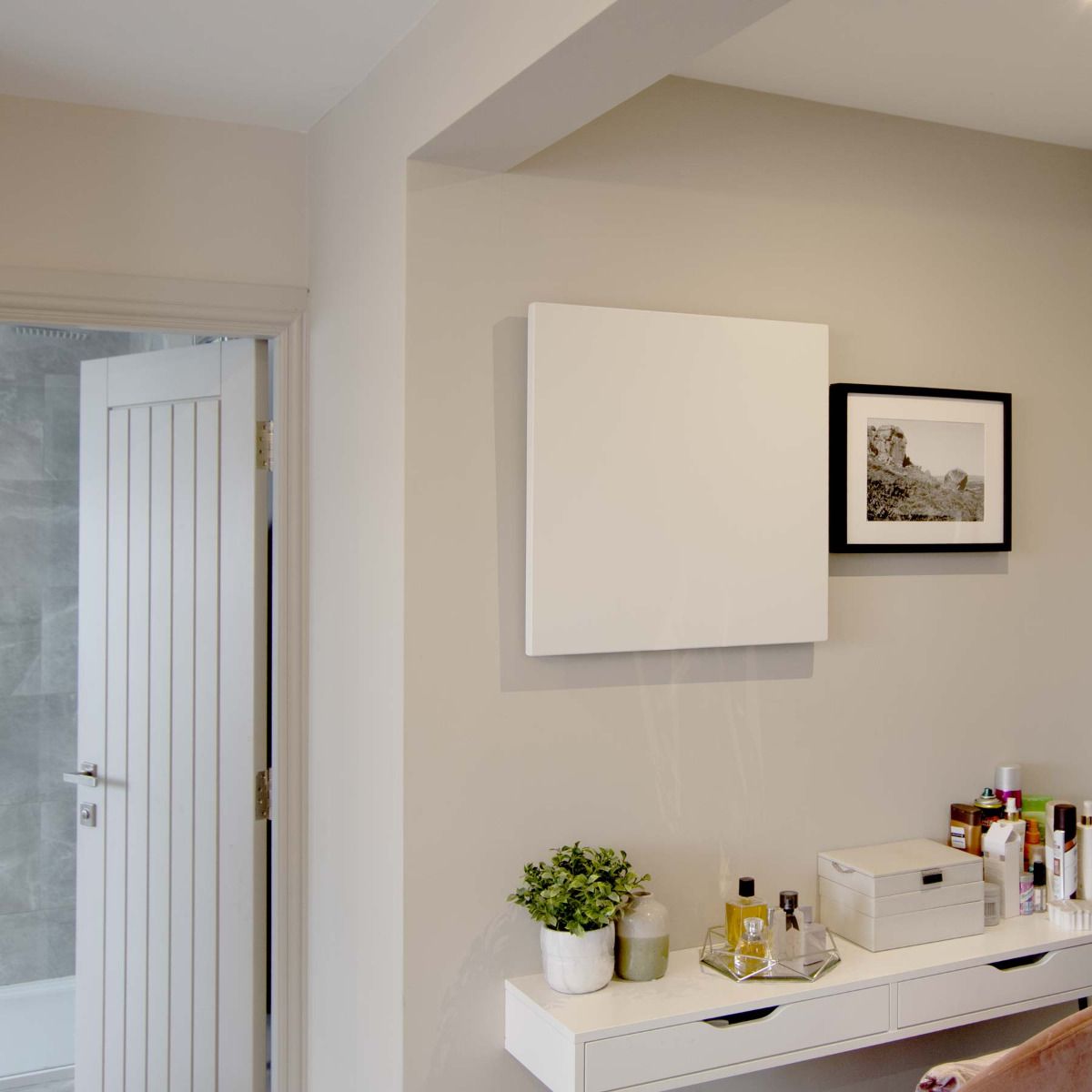

While the drive for more energy efficient homes has been ongoing for several years now, the increasing energy costs have undoubtedly caused a boost in the adoption of more energy saving home heating solutions.
As part of the recent Autumn Budget announcement, Chancellor of the Exchequer Jeremy Hunt underlined the importance of the UK reducing its reliance on foreign gas, as well as announcing additional funding to improve home insulation from 2025. This was done in the hope of increasing energy efficiency and reducing bills.
Currently, the majority of the country is still heavily relying on fossil fuels for heating. According to recent reports, around 80% of households in the UK are using gas as their main source. Heating systems that rely on fossil fuels are generally less efficient because they see a lot more waste and heat loss, meaning the people using them are paying for warmth they don’t benefit from. Home heating accounts for 14% of the UK’s carbon emissions, which is why improving energy efficiency in homes and providing greener alternatives to gas heating is key to reducing the nation’s carbon footprint.
Are Brits looking to change the way they heat their homes? And what kind of help would they like to receive from the Government to decarbonise their homes and improve their energy efficiency?
To find out, we asked individuals across the country to rate their own green credentials, investigating how many Brits have begun installing environmentally friendly energy solutions in their own homes. We also researched the main barriers for those who are yet to switch to a more efficient system, comparing these new findings to data from a one of our previous studies. This helped us to see how attitudes have changed with the energy crisis worsening.
Finally, we looked into data regarding the adoption of the Green Homes Grants in England – the Government scheme launched to help households install energy efficient improvements – as well as the type of central heating most commonly used across each region, to determine the greenest cities for home energy.
How keen is the country on going green?
We asked Brits to rate their mindfulness for their own energy usage on a scale from 1-10, with a particular focus on their heating habits. The result? One in five people scored themselves a perfect ten. In fact, Brits on the whole consider themselves to be very mindful when it comes to energy usage, with 84% of respondents scoring themselves 7/10 or higher. This was further reflected in their reported energy usage – seven in ten people say they have reduced their energy consumption since 2021.
While many have done this in hopes of reducing their energy bills – which are estimated to be rising to £3,100 for a typical household from April 2023 – our data has shown that a considerable percentage of people have made this decision for environmental reasons too. Of the 71% of people who have decreased consumption this year, 30% have done so to reduce their impact on the environment.


In comparison to 2021, more Brits seem willing to adopt green energy solutions in their home. The number of individuals who claimed they wouldn’t switch has decreased by 4% year on year. Now, less than one in ten say they have no intention of investing in technologies such as heat pumps, biomass boilers or electric heating.
In fact, adoption of residential green technologies has increased over the past year, with 10% of households now saying they have already done so. This figure was just 6% last year.
Barriers to adopting green solutions at home
In the Autumn Budget, Jeremy Hunt announced an additional £6bn of funding to improve home insulation from 2025. This is likely to be welcomed by many, with our survey revealing that 45% of Brits consider improving insulation to be the number one priority the Government should have when it comes to improving the energy efficiency rating of UK homes. A further 43% said they would welcome grants or incentives to adopt gas alternatives for home heating.
In addition to Government measures, there are still several barriers to the nation’s adoption of greener solutions at home.
According to our data, upfront installation costs are still the biggest obstacle. However, despite the cost of living crisis, this area has also seen a slight improvement. In 2021, 43% of Brits said upfront costs were the main barrier to ‘going green’ with their home energy, while this decreased slightly in 2022 (41%).
Additionally, knowledge of the solutions available still seems to be lacking overall. When quizzed on various potential technologies available to households, we found that Brits are largely uninformed of the low carbon solutions they can choose from.
In fact, over a quarter of Brits (27%) said they don’t know enough about air source heat pumps to commit to installing one and a further 26% said the same about ground source heat pumps. This rose to around a third for biomass boilers (32%). Previous government initiatives have sought to provide support to households looking to replace fossil fuel heating systems with one of these three technologies. However, our data suggests there is still a lot of work to do in helping the nation understand these alternatives.
Many are more informed about electric heating - just 17% said they didn’t know enough about this solution, but Brits are the least confident in their knowledge of infrared heaters.
Which cities are the greenest?
As part of our research, we looked into the adoption rate of green home energy schemes compared to the estimated number of households across England[1].
This included assessing the percentage of homes with electric heating or alternatives such as a heat pump in each region, and the highest percentage of positive responses from our survey on:
- How mindful they are of energy usage
- How many have reduced energy usage for environmental reasons
- How many have adopted ‘greener’ solutions, or intend to do so over the next few years
According to our ranking, the greenest cities for home heating are:
1. Bristol
2. London
3. Southampton
4. Manchester
5. Birmingham


Bristol scored the top spot thanks to its high Green Homes Grant adoption rates compared to the rest of the country (albeit still very low, less than 1% of all households). They also have a fairly high percentage of households using renewables, heat pumps or electricity as their main heating source in the region (around 15%) and positive survey results across the board.
Most notably, of the 74% of Bristol residents who have reduced their energy consumption over the last year, 34% have done so to reduce their environmental impact. Bristol’s average energy mindfulness rating was 8.2, with 22% of the city scoring themselves 10/10.
Of those that have not changed their consumption habits, 9% say this is because they’ve never worried about it, while an overwhelming majority (91%) said they were already being mindful for environmental or financial reasons.
London is a close second, with the capital featuring the most positive attitudes to adopting green measures for home energy use, and a respectable 12 percent of households using alternative heating methods to gas.
In third place is Southampton, with an energy mindfulness rating of 8.2, the same as Bristol. Here, almost three quarters (73%) of residents have reduced their energy consumption and almost two fifths (38%) have done so for environmental reasons. 10% of residents here have already installed green energy solutions, however almost half (46%) say they currently can’t afford the upfront cost of doing so, slightly more than the average.
[1] Ranking includes England only as equivalent data for Scotland, Wales and Northern Ireland schemes not available and/or not updated to 2022
What you need to know if you’re looking to make the switch
While our study has shown Brits are considering the environmental impact of using fossil fuels to heat their homes, the data seems to suggest there is still a lack of understanding of the solutions available. It’s important to note that costs also remain a big barrier even to those in the know.
So, what do you need to consider? Firstly, how feasible it is for you to invest at the moment? If rising energy costs are your immediate concern, then now may not be the right time.
However, it’s still worth thinking about the long-term benefits of ditching fossil fuels. If you don’t currently have the means for an entire system update, plan ahead and make the switch in smaller steps like changing your energy tariff.
While gas is generally cheaper per unit, you’ll need more units of gas in order to reach the same level of efficiency as other solutions. Up to 50% of the heat produced by a gas boiler can be lost through the pipes, especially if they’re not well insulated. This means you end up paying for wasted heat. So, what are the alternatives?
Green alternatives to gas central heating
There are a number of options available for those looking to move away from fossil fuels, such as heat pumps, biomass boilers and electric heating. Our experts have put together some useful tips to help you navigate the different options and make the best decisions for your home.
Heat pumps
Air source heat pumps take the air from outside your property and convert it into energy for heating you home. They typically cost around £8,000 to install. Ground source pumps extract solar energy from the earth and convert it into power and are closer to £35,000 for a 2-3 bedroom house. In terms of running costs, outgoings for a heat pump in an average-sized home averages at around £1,725 a year in total.
Biomass boilers
Biomass boilers use materials such as wood pellets or logs to create heat. This could be another good alternative, especially for rural homes and for those able to source suitable matter that can be turned into fuel. On average, they cost between £5,000 and £13,000 to install, but can be quite cheap to run as the cost of fuel needed is around £5p per Kw/h. You will have to make sure you have enough space to house it though, as this type of heating system can be a considerable size.
Electric Radiators
Electric radiators convert every watt of energy into usable heat, making them 100% efficient at point of use. They usually cost between £200 and £550 per unit, depending on wattage and model. As a generally DIY-friendly heating solution, electric radiators have minimal installation fees and cost around £2,247 a year collectively to run for an average 3-bedroom home1.
Many electric radiators come with built-in precision thermostats that accurately maintain temperatures to guarantee your set temperature and minimise waste. This also enables room-by-room programming, which means you don’t have to waste energy heating unused spaces. Open window detection, adaptive start, 24/7 scheduling and smart WiFi control come as standard for many electric radiators, allowing further scope for energy-saving programming.
Infrared heaters
Infrared heaters are another good solution, especially if your home is not perfectly insulated. Instead of heating the air, the radiant warmth they produce travels in a wave, heating people and objects direct, which means warmth isn’t lost to open doors or windows. They cost between £200 and £500 per unit and are generally up to £675 to run collectively per year.
Green energy
Switching to a green tariff means that your provider is agreeing to buy energy only from renewable generation methods such as wind or solar power. Green energy suppliers can also replace the electricity you use with renewables and feed it back into the National Grid, making your home heating carbon free. Electric radiators and infrared heaters can both pair easily with a green energy tariff, for even greener heating.
If don’t have the means to install an entirely brand new heating system but still want to switch to a green alternative, choosing a green energy tariff could be the way to go.
Things to consider before making the switch
It’s always worth noting that running costs and potential savings for each solution vary based on a number of factors. This can include the size and location of your home, as well as insulation, so it’s always advisable to consult a professional before you make your final decision. Ultimately, going green seems like a positive step in the right direction and many people are already keen to get underway with adopting more efficient ways to heat their homes.
Key takeaways
- Around 80% of British households are still using gas as their main heating source - a notoriously inefficient heating solution that relies too heavily on the burning of fossil fuels. With the rise of energy costs, many are now turning to more efficient alternatives.
- Home heating accounts for 14% of the UK’s carbon emissions, which is why providing greener alternatives to gas heating is key to reducing the nation’s carbon footprint.
- Bristol currently ranks as the greenest city with an overall energy mindfulness rating of 8.2.
- Most Brits consider themselves to be very mindful when it comes to energy usage, with 84% of respondents scoring themselves 7/10 or higher on efficiency.
- Green alternatives include electric radiators, infrared heaters, biomass boilers and heat pumps but most people are more willing to switch to the solution they are most knowledgeable about, which is currently electric heating.
- Pairing your heating with a green energy tariff is a positive step in the right direction - both electric radiators and infrared heaters can be use alongside green energy.
Sources:
- Survey of 2,000 UK residents conducted in November 2022
- 2021 comparison data from a survey of 2,000 UK residents conducted in December 2021
- Home heating carbon emissions and percentage of homes using gas information: https://www.theguardian.com/environment/2022/feb/03/uk-government-failing-to-cut-carbon-emissions-from-home-heating#:~:text=increasingly%20expensive%20gas.-,Home%20heating%20is%20responsible%20for%20about%2014%25%20of%20the%20UK's,meet%20its%20carbon%20reduction%20targets.
- Autumn Budget announcement information: https://www.independent.co.uk/business/extra-ps6-billion-funding-for-insulating-draughty-homes-too-little-too-late-b2227200.html
- Green measures adoption data split by local authority (up to the most recent data covering up to August 2022) https://www.gov.uk/government/collections/green-home-grant-statistics,
- Data on central heating type per region (households with electric heating and renewable energy including heat pumps): https://www.ons.gov.uk/peoplepopulationandcommunity/housing/articles/energyefficiencyofhousinginenglandandwales/2022#central-heating-fuel-type-for-dwellings
- Estimated number of households per city for comparison: https://www.ons.gov.uk/peoplepopulationandcommunity/birthsdeathsandmarriages/families/adhocs/13586estimatednumberofhouseholdsbyselectedhouseholdtypeslo (Ranking includes England only as equivalent data for Scotland, Wales and Northern Ireland schemes not readily available and/or not updated to 2022)
- Biomass boiler costs: https://www.greenmatch.co.uk/blog/2015/02/how-much-does-a-biomass-boiler-cost
- Heat pumps costs: https://www.greenmatch.co.uk/blog/2014/08/the-running-costs-of-heat-pumps and https://www.which.co.uk/reviews/ground-and-air-source-heat-pumps/article/ground-and-air-source-heat-pumps/air-source-heat-pump-costs-and-savings-akySY6N5Y6Dd - Which?







